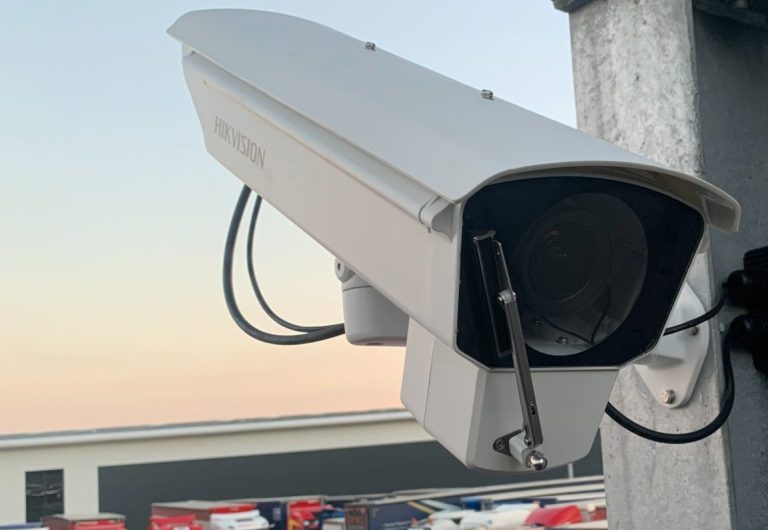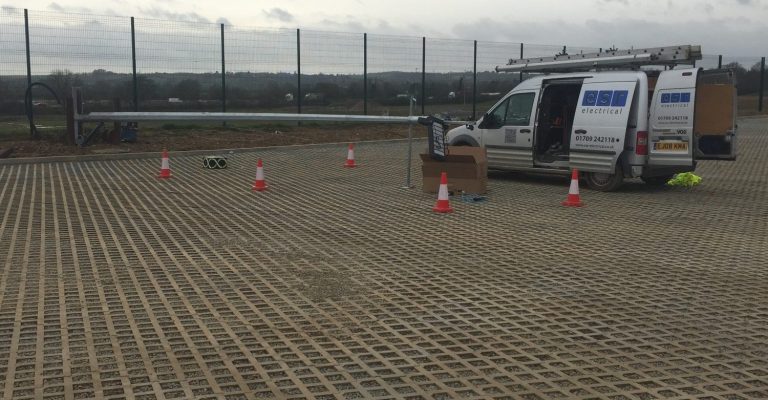CCTV design according to your needs
We will happily discuss the design and product options with you, whether a simple 1-camera installation to address one specific issue, or a 100-camera system which needs to provide evidence for use in court or to satisfy building control or police requirements for planning permission. I have extensive experience in both.
Contact us for a free initial consutlation. Brief guidance is provided below.

bespoke
design

CCTV Control Rooms
On-site security control rooms to enable staff to address specific site security needs.

Careful equipment specification
Not all cameras are alike. Specifications may appear the same on the surface, but this example shows a vehicle wash, station, requiring wipers to keep the water off the lens.

Camera locations
Correct location can make all the difference to catching someone's hoodie, or their face! Here we are using a high quality column to ensure minimal wind vibration so that pictures are not blurred in bad weather.
How to design a CCTV system.
How many and what type of camera?
Analogue or IP Digital?
Analogue systems are cheaper for smaller systems, but have the following differences:
They cannot send images from the camera to the recorder over a computer network. This means that you have to run a seperate camera cable (and power cable) to each camera from the recorder. But with a computer network, you can combine all the cameras in a given location onto one computer network cable, thus saving installation, cost, and making future addition easy.
Digital IP cameras can be added to multiple recorders or displays very easily. For example, where you have tennants on site and you want them to have their own CCTV recorder, a simple configuration of the network would allow them to also attach your main entry gate camera to their own recorder for their own unit. But they will not be able to see your other cameras, and they have their own CCTV system in their own unit which they are fully responsible for.
With Digital IP cameras, live display screens in multiple locations can be easily added, remote from the recorder or camera location, allowing them to display any of a selection of cameras, all over one simple Cat5e/Cat6 LAN network connection.
Digital IP cameras have in-built analysis intelligence which is far superior in performance from analogue recorders, which have very limited analytical performance. This is called "Video analytics" or "Video Content Analysis (VCA)".
Analogue recorders are very limited in the number of frames (refresh rate) they can record. As an example, some common basic DVR's can only reccord 8fps (frames per second) at 5Mp (Megapixel). However, most IP digital cameras can produce 25fps at full resolution (such as 8Mp!). This really matters in some situations especially staff fraud prevention.
The quality of the images with IP cameras is often far better due the availability of such tools as 3D Dynamic Noise Reduction, because a full computer is inside each camera, vastly enhancing the image quality.
Analogue cameras often are made of plastic rather than metal, and even when they are metal, they have poorer securing and adjustment screws. This means that someone can reach up and twist them away so that they are no longer watching the scene. Then the only thing you can prove is that someone moved a camera, not what they did afterwards.
Equipment price
Sometimes two cameras would appear on the surface to have the same specification. Installing the cheaper one will result in an image which is apparently immaculate. However, as there is no movement in the picture, there is no loss of quality. But a more expensive camera will produce a good resolution without blurring if someone runs across the picture at night. You really do get what you pay for, but you wont notice unless you know how to compare or when someone has stolen your car one night, you find that the image of the thief is just a grey blurry blob despite the car being shown (parked) in excellent resolution. Once it starts moving it will blur. Better cameras do a better job with movement in low light.
How many cameras do I need?
By working out what exactly the CCTV system can provide your home or business, we can save you money and ensure the system does not disappoint. The UK Government advises that before a design (or number of cameras) is selected, that the exact purposes of the system are decided.
For example, if it's to deter crime, lighting might be cheaper. If it's to prevent burglary, but all walls are in easy reach (so someone can just crawl up behind the camera and destroy it), then big steel roller shutters would achieve far, far more than a CCTV system. So working out exactly what your objective is before the knee-jerk "we need CCTV" will reduce disappointment and ensure that funds are well spent.
How many cameras do I need?
Usually we are initially consulted with "we think X number of cameras".
Let's take an illsutration where the customer has decided that they want one camera in the car park with an entry gate. One camera can cover the whole car park! But, due to the zoomed out lens, the faces or registration plates will not be visible and certainly will not provide the legally required proof in a court of law (255 pixels per meter for a persons face). This may be fine. But lets look at the four options:
1). Increase the number of cameras (which is often minimal cost once cables are already being installed, the cost of the camera is low compared to the cost of the labour, especially if the cameras can be at the same location). Have one wide view camera and one zoomed in on the entry gate.
2). Choose only to zoom in on the gate, proving who, exactly, entered and left. This image will help identify any unknown persons entering the site far better than a zoomed out wide angle view camera. This best suits the situation where your problem is that you have regular known individuals entering and parking, but you are seeking to identify unwelcome or unknown visitors.
3). Choose only to monitor the whole area with the camera strategically placed, to inform the viewer of only what is happening (but not which individual is doing it). This is no use in identifying persons but does tell you everything that happened within the cameras' view.
4). Choose a PTZ (pan/tilt/zoom) camera which a security guard can constantly control, this provides all options, except that it requires staff to operate it. This may be appropriate if live incidents with staff attending are the only issue where identity proof is required.
5). Decide why the CCTV is desired, eg. is it to deter vandalism? Simple access control on the gate might do far, far more at a far lower price!
Identifying your Operational Requirement (OR).
We are happy to sit and discuss requirements and then determine the correct type and location of cameras to achieve the stated aims. This way, nobody is disappointed when the system is needed after something has happened.
This is called an Operational Requirement.
©Copyright. All rights reserved.
We need your consent to load the translations
We use a third-party service to translate the website content that may collect data about your activity. Please review the details in the privacy policy and accept the service to view the translations.
